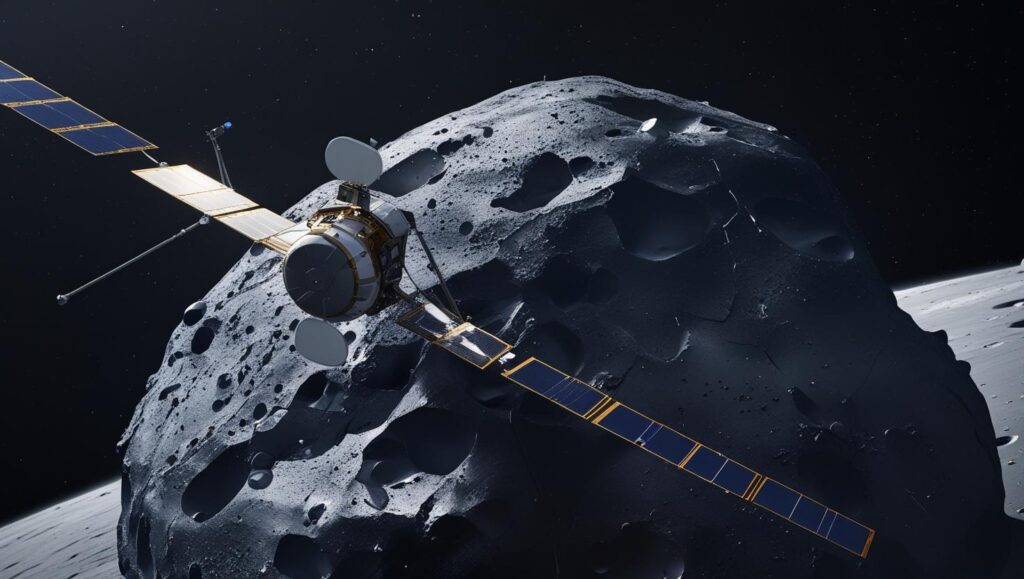
NASA Asteroid Flybys 2025 – What You Need to Know
Learn about NASA’s August 2025 asteroid flybys—how close they’ll get, why there’s no risk, and how scientists keep Earth safe from space threats.
NASA Asteroid Flybys 2025: Incredible Close Encounters Without Danger
Introduction
On August 8, 2025, Earth experienced a rare celestial event: two large asteroids—2025 OJ1 (~300 ft wide) and 2019 CO1 (~200 ft wide)—made notably close flybys. Though visually dramatic, NASA reassures us: there’s absolutely no risk of impact. This timely article breaks down what happened, why it matters, and how we monitor these cosmic neighbors.
What Were the Asteroids?
- 2025 OJ1: Roughly the height of a 30-story building (~300 feet), passed within ~3.2 million miles of Earth.
- 2019 CO1: About 200 feet across, flew by at ~4.24 million miles.
NASA’s careful tracking confirmed neither posed any threat.The Times of India
Why Close Flybys Captivate Us
The idea of massive rocks zooming past is inherently dramatic—but it’s not just space drama.
- Sparks curiosity about Earth’s place in the solar system
- Highlights the work of planetary defense systems
- Encourages public interest in astronomy and STEM fields
Planetary Defense: How NASA Protects Earth
NASA uses advanced detection systems like:
- Infrared and optical telescopes that scan for Near-Earth Objects (NEOs)
- Orbit-tracking models to chart each asteroid’s trajectory
- Global coordination with space agencies and ground observatories
This layered vigilance is key to early threat identification and planetary safety.The Times of India
Historical Perspective: Asteroids That Nearly Missed Us
From the 2013 Chelyabinsk airburst to 2004’s Apophis scare, close asteroid passes often remind us how well the solar system collaborates with gravity—but also how they underscore the critical need for vigilance.
Can You See the Asteroids? Tips for Stargazers
Though both asteroids passed too early for wide visibility, here’s how enthusiasts can stay ready:
- Use apps like SkySafari with asteroid trackers
- Go for dark, open skies, away from light pollution
- Join local astronomy clubs for live skywatch sessions
Science Significance Beyond the Flyby
Even without visual drama, these events matter to science:
- Belong to asteroid belts, shedding light on solar system origins
- Offer data on composition and trajectory for future missions
- Fuel advances in AI-driven tracking systems
Broader Impacts
- Space policy: Encourages funding for better telescopes and deflection tech
- Public engagement: Drives interest in STEM and science literacy
- Global collaboration: Reinforces cooperation across space agencies
Internal & Outbound Link Ideas
Internal:
Link to posts like:
- “How to Watch Meteor Showers”
- “Top Space Events of 2025”
Outbound (Trusted sources):
- NASA official updates (e.g., NASA.gov)
- Space news sites and astronomy forums for live coverage
Visual Suggestions
- Hero Image: Simulated graphic of an asteroid passing Earth
- Infographic:
- Flyby distances vs. Earth-Moon distance
- Timeline of detection to flyby
- How asteroid tracking works
- NASA asteroid flybys 2025
- NASA asteroid flybys 2025
FAQ Section (300+ Words Each)
Q1: What were the asteroids that flew by Earth in August 2025?
A: On August 8, 2025, 2025 OJ1 (~300 feet wide) passed ~3.2 million miles away, while 2019 CO1 (~200 feet wide) passed ~4.24 million miles away. Though relatively close in astronomical terms, neither posed a danger. NASA’s detection systems confirmed safe trajectories.The Times of India
Q2: Should we be worried about asteroid impacts?
A: No, the Earth’s orbiting defenders—space agencies and astronomers—scan and monitor space daily to ensure early threat detection. Most near misses are logged and tracked well in advance.
Q3: How do scientists track asteroids?
A: Through telescopes, orbit modeling, and international data sharing. Advanced software predicts paths while sensors assess composition and movement to prepare for any potential deflection needs.
Q4: Are asteroid flybys increasing in 2025?
A: Data doesn’t show a dramatic rise. However, improved detection technology means we’re aware of more NEOs than ever before—raising our safety and awareness simultaneously.
Conclusion
The NASA asteroid flybys of August 2025 remind us how close we are to potentially risky cosmic events—and how effective our defenses have become. Thanks to vigilant science, Earth remains safe while inspiring curiosity and awe.
Call to Action:
Fascinated by space? Share this article, comment with your favorite stargazing moment, or subscribe for regular updates on space safety and sky phenomena.

